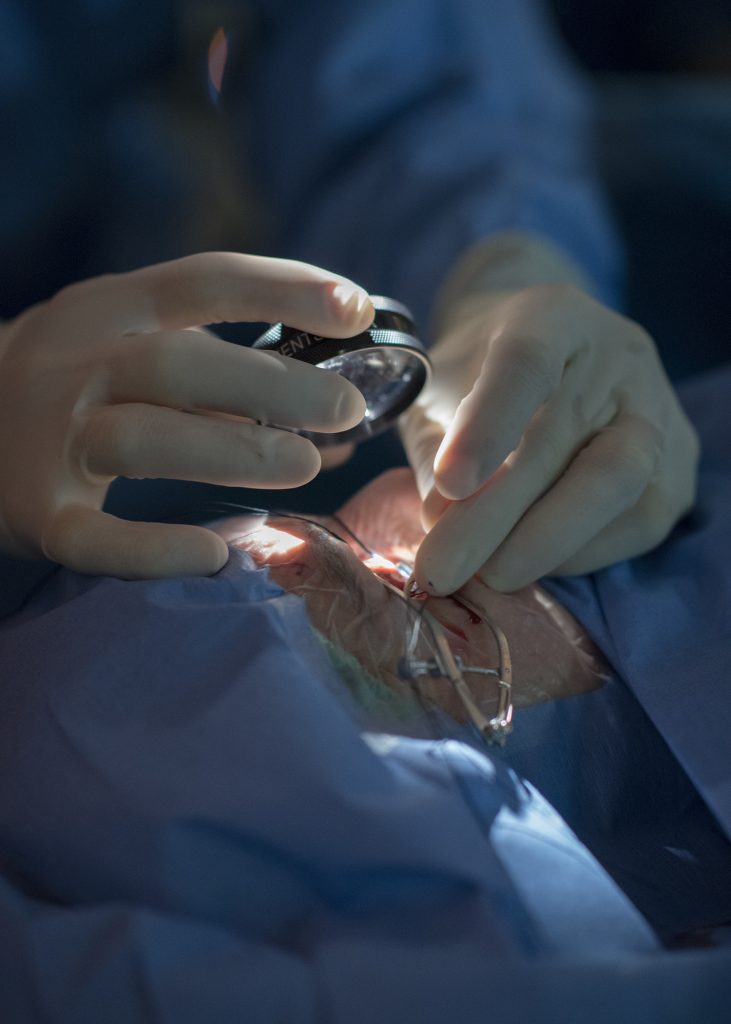
Featured image: A kidney donor waves to the recipient on her way to the operating room. These patients were part of a kidney chain featured in a Figure 1 Grand Rounds.
Everyone who owns a smartphone also owns a powerful camera — but that doesn’t mean everyone takes great pictures. Photography remains an art, and medical photography is even more so. On Figure 1, the photographs that accompany cases can be as simple as a picture of an ECG readout or as detailed as an operating room action shot captured in the middle of a complex surgery.
One of the masters of medical photography on Figure 1 is Brennan Wesley. A professional photographer by training, Wesley describes his process as situational storytelling. He majored in fine art and was drawn to the immediacy of photography. Wesley shoots everything from cuisine to concerts for major publications, but his day job is at the Medical University of South Carolina in Charleston. He began working in medical photography after being asked to take a portrait of the head of anesthesia. Wesley met the doctor in the operating room, and ended up photographing his entire team.

In this Q&A, he explains his art and his craft.
What Do You Want Your Photographs to Say? How Do You Get Them to Say That?
More than anything, to tell the story of the patient or the surgeon. I’ve worked with a lot of chefs. I don’t think a properly run five-star kitchen is any different than an operating room. In both cases, nothing goes out the door unless it’s inspected. There is a head chef, and there is a surgeon. I see them both as artwork. Artistically, each is meticulous and beautiful in its own way.
What are the Particular Challenges of Medical Photography?
The most difficult thing is the light. There’s a lot of direct light and it’s very hard to figure it out. In terms of composition and colour schemes, there are a lot of red and blues. It all works off one source of light. You have to be able to move around, which means the OR team has to be comfortable with you there. After a while, if you do this job right, they respect you enough and know you won’t get within two feet of a sterile area. And you’ll need to scrub in, of course. That also means cleaning equipment with alcohol wipes.
What are the Best Parts of Medicine to Photograph? The Worst?
Patient stories are the best. For me, it’s about making a connection to what’s outside of the operating room and over the long term seeing that work out in a positive way.

How Do You Get the Perfect Shot?
It’s all about time. You have to be there for as much of the procedure as possible. You have to ask the physicians, what are the most important parts? When will they happen? They’re not going to wait for you. It’s vigilance and experience. You start to realize where things happen and when. And you have to befriend the anesthesiologists. Ask them a lot of questions, quietly.
What Technology is Most Helpful in Doing Your Job?
You can’t use outside light, so you’re on your own. You need good lenses.
What Do You Think of Smartphone Cameras?
I think they’re great. There’s a purpose for everything. Smartphones are basically portable telemedicine devices, if you want to think of them that way. The quality’s getting better and better. Just don’t drop them.

Is There a Trade Secret You Can Share?
When you’re photographing a surgery, always bounce everything off the gloves. You just try to make sure the gloves don’t blow out. So you start that as the spot. Once you go above the gloves, you read off the room. There’s a huge difference to shooting above the gloves.
Published November 8, 2021
You can see more of Wesley’s medical work on Figure 1, and his non-medical photography on his personal portfolio site.
Join the Conversation
Register for Figure 1 and be part of a global community of healthcare professionals gaining medical knowledge, securely sharing real patient cases, and improving outcomes.


